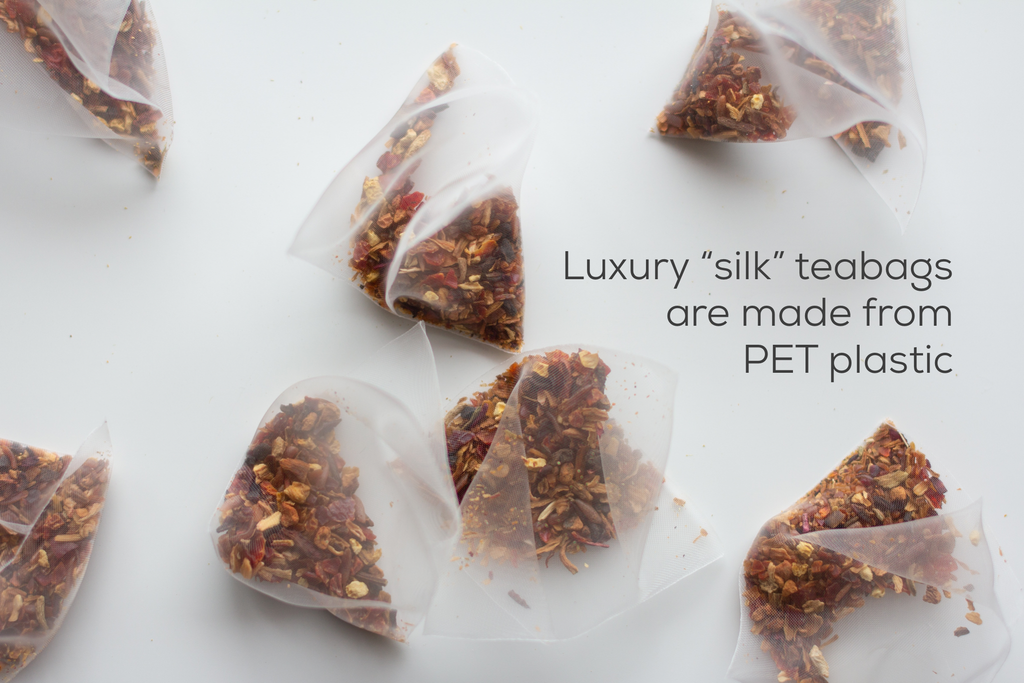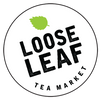Did you know... Many tea companies sell their tea in teabags that are made with plastic? I hate to say it, but it's true. A recent study conducted in 2019 showed that many of the teabags made by some of the most popular brands contain plastic. The study showed that one teabag of tea steeped at 95C (203F) released “approximately 11.6 billion microplastics and 3.1 billion nanoplastics into a single cup of the beverage.” This is a significantly higher level of plastic being ingested than what you would be exposed to from other food sources.
You can check out the results of that study right here.
Tetley, Twinings and several other tea companies had teabags which flunked the plastic test. Other tea brands that use plastic in their teabags include: Tazo, Teavana, Peets, Starbucks, Celestial Seasonings, Tea Forte, Harney & Sons, Nerada, Ito En, Lipton, and Aldi.
Other tea brands did pretty well. Traditional Medicinals, Pukka, Numi, Yogi Tea, and Teapigs are all plastic-free.
Check out this video by the BBC that shows some of the brands that use plastic in their teabags.
After the 2019 study, some tea companies made the switch to plant-based plastic (also called PLA), which is better than petroleum-derived plastic, but not by much. It is biodegradable and compostable, but only under controlled industrial conditions. And it is still a major problem when it comes to ocean pollution.
And do you really want to drink eco-friendly plastic?
Ummmm…. No thank you.

Share this on Pinterest
Why Is There Plastic In Teabags Anyway?
Teabags are manufactured with plastic in order to hold their shape in hot water. The plastic also allows the teabags to be securely sealed shut with heat. Although the amount of plastic may be relatively low, or in the form of biodegradable plastic, it adds up to a significant amount when you take into consideration how many cups of tea you drink, and how many other sources of plastic you are ingesting or being exposed to on a daily basis.
What Exactly Are Microplastics, Anyway?
Microplastics are tiny particles of plastic that measure less than 5mm. They are most often PET plastic. This is the same type of plastic used in water bottles. Although microplastic particles are significantly smaller than plastic water bottles, the harm they cause to both the environment and your own body are the same. Tea is typically steeped at temperatures of 175F – 212F. Because PET plastic releases plastic particles at 169F, there is no way you’re going to avoid drinking an unhealthy dose of plastic with every cup. The only way to avoid ingesting microplastics from your teabag is to cold brew your tea, which means that you steep your tea in cold water rather than hot water.

How Do Microplastics Affect Our Health?
When it comes to assessing the harm caused by microplastics, you have to factor in both the harm to your body, and the overall long term damage to the environment. Teabags that contain plastic do not break down in landfills, and they are not compostable in your garden. Like water bottles and other plastic packaging, teabags made with plastic are dangerous to animals, especially aquatic and marine animals. Microplastics are a massive ecological problem, as they are found in the water, soil, and even the air.
When consumed, microplastics build up in your body, and cause long-term harm. Microplastic particles in the body are linked to lung and cardiovascular diseases, increased allergies, and immune system disorders. These nasty little particles cross into the cell membrane and trigger oxidative stress. In the human body, plastics cause inflammation, endocrine disruption, and hormone imbalances in both men and women. This can lead to blood sugar problems, fertility issues, neurological disorders, obesity, and even cancer.
Read more about endocrine disruptors here

And Don’t Forget About The Microplastics In Take-Out Cups
Another problem is that microplastics are also in to-go cups for hot drinks like coffee and tea. Take-out cups made from paper are lined with plastic to make sure the cups are waterproof and won’t disintegrate in hot liquid the way plain, unlined paper will. The terrible news is that microplastics begin dissolving in the hot liquid (above 169F) within minutes. The longer the drink sits in the cup, the more plastic you’re ingesting. There was a study done in India that examined how much plastic was leached from the cup after being in hot water for 15 minutes. The result: up to 25,000 microplastic particles were now in the hot water. If this was a cup of hot coffee or tea, you would be drinking those 25,000 plastic particles.
How Can I Tell If My Teabag Contains Plastic?
In the 2019 study, teabags were put into a solution of copper ammonia, which dissolves everything but the plastic. So the only way to know for certain is to have the teabags tested in a laboratory. However, there are a few ways you can test your teabag at home.

Do the tear test. Does it rip easily or is it hard to tear? This isn’t a guarantee that there are no microplastics if it tears easily, but teabags with a high plastic content are more difficult to tear than paper.
Do the flame test. (And be careful!) Does the teabag burn like paper or does it melt? Does it smell like burned paper or does it smell like burned plastic? Again, this isn’t a guarantee that your teabag is plastic-free if it burns and smells like paper, as there may be small amounts of plastic present in the bag, including the edges of heat-sealed bags.
Is your teabag one of those “silk sachets” or pyramids? If so, it’s not silk, it’s food-grade nylon, which is plastic.
Does the paper-looking teabag have a string attached with a staple? That’s a sign that it is paper. However, if the string is attached without a staple or an obvious stitch, it is possible that it’s sealed by heat, and that means plastic.
Is the teabag shaped like a pouch? Pouches are either square or round. Pouch-style teabags without strings are heat-sealed, and contain plastic.

A Few More Reasons To Make The Switch From Bagged Tea To Loose Leaf Tea
- Most teabags are bleached with chemicals that are known to cause or contribute to disease.
- The tea inside the teabags is finely shredded rather than whole. These leaves lose their flavor and aroma faster than loose leaf tea. The extra fine shredding also means that the antioxidants and vitamins in the tea are lost quickly. If you are drinking tea for the antioxidants, you’re not getting much from a teabag.
- Green and black teas become bitter much faster due to the quick release of tannins in the leaves.
- As a rule, only the lowest quality leaves are used for bagged tea.
Loose leaf tea is far superior to bagged tea because:
- Whole or cut leaves are intact and in their natural dried form
- Loose leaf tea contain more antioxidants and vitamins because of not being finely shredded and exposed to air
- Loose leaf tea has a richer aroma and more complex flavors
- Loose leaf tea infusers come in all kinds of cute, cool, and sleekly functional designs
- And best of all: it’s not in plastic teabags!
Although environmental sources of microplastics are unfortunately unavoidable until we get our collective sh*t together and stop being such brainless polluters, there are some simple ways to avoid ingesting them. Here are a few things you can do starting today:
- Avoid tea in teabags and switch to loose leaf tea
- Avoid using plastic steepers and opt for stainless steel, glass, ceramic, cotton, or eco-friendly paper
- If you’re getting a hot drink to-go, provide your own thermos or mug, or only visit tea and coffee shops that use eco-friendly plastic-free take-out cups.
- Avoid plastic water bottles altogether and get a reusable glass or stainless steel bottle.
Shop organic Loose Leaf Teas now and save 15% with code LOOSELEAF



2 comments
Great article! I never thought about affecting teabags before. Thanks for sharing this eye-opening information. I will certainly change to loose-leaf tea.
Thanks for the great article. A nice friendly reminder … Your teas are so wonderful. I’ll continue using them as there are so many flavors to try. Smiles